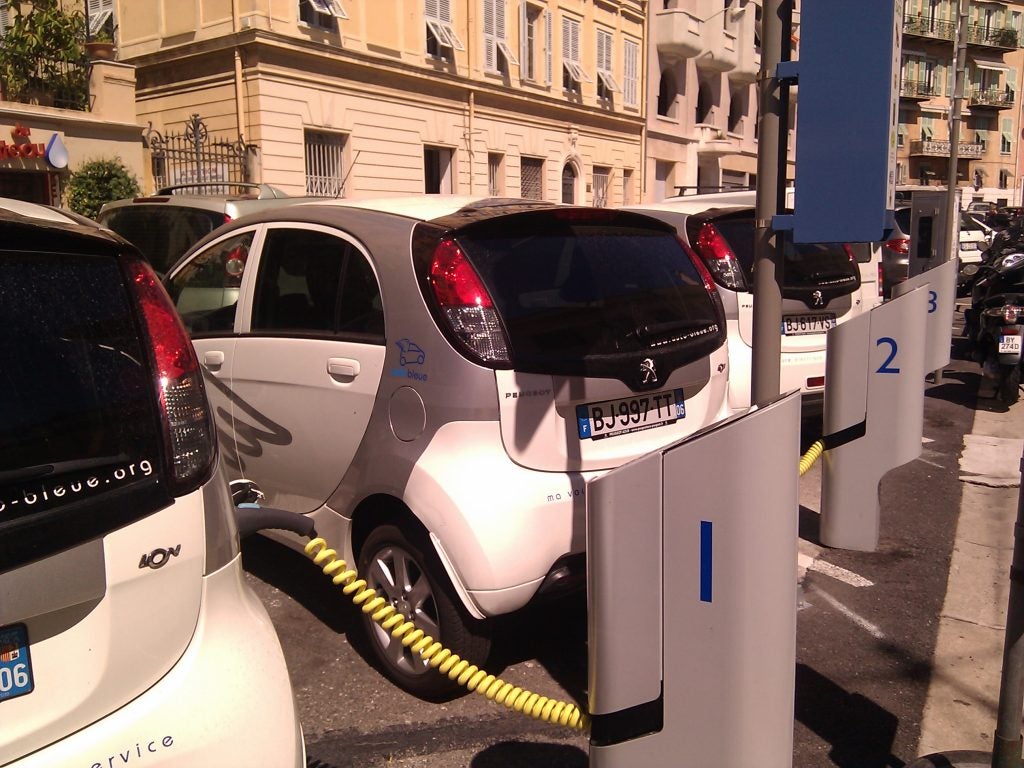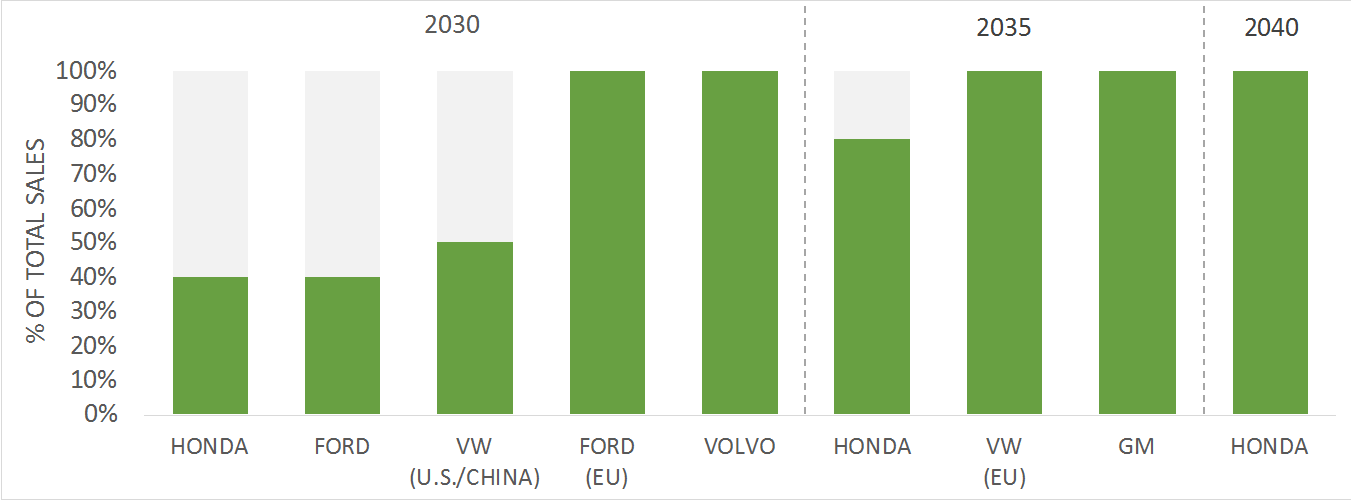The European Union just released proposed legislation for passenger cars and vans that would move the continent closer to a zero-emission transportation future.
The EU proposal would require a 55% reduction in carbon pollution for new cars and a 50% reduction for new vans by 2030 – and a 100% reduction for both in 2035. That would substantially strengthen standards that the EU adopted in 2019, and would ultimately eliminate harmful tailpipe pollution from new vehicles sold there.
The proposal would save European drivers money on gas while dramatically cutting climate and air pollution from one of the world’s largest fleets of passenger vehicles. It also has profound reverberations around the world – especially here in the U.S.
The EU proposal reinforces the need for protective climate and air pollution safeguards
The EU proposal reinforces the fact that protective climate and air pollution safeguards must include the elimination of tailpipe pollution from passenger vehicles by 2035 and ensure that at least half of new vehicles sold by 2030 are zero-emitting.
The proposal is part of a growing number of similar actions in major vehicle markets around the world. The United Kingdom just announced its plan for eliminating pollution from new cars and vans by 2035. Canada also recently announced its goal of eliminating tailpipe pollution from new motor vehicles by 2035, accelerating its prior 2040 commitment.
Here in the U.S., states are leading the way toward a clean transportation future. The California Air Resources Board hosted a public workshop in May on the development of its Advanced Clean Cars II program. At that meeting, CARB announced that it intends to propose multipollutant standards that will ensure all new cars and light-duty trucks sold in California are zero-emitting vehicles by 2035, with a trajectory that would require 60% of new vehicles to be zero-emitting by 2030. Massachusetts has already indicated it will adopt these standards.
EDF recently released a fact sheet that lists these and other commitments from countries around the world.
The EU proposal is also consistent with automakers’ commitments to eliminate dangerous motor vehicle pollution. GM recently announced its aspiration to eliminate tailpipe pollution from new light-duty vehicles by 2035. Ford has projected that 40% of its global sales and 100% of its European sales will be zero-emitting vehicles by 2030. Volkswagen just announced that it expects 50% of its global sales to be zero-emitting vehicles by 2030.
A huge opportunity for a clean transportation future
The Biden administration is expected to soon propose near-term standards for passenger cars, trucks, and SUVs through model year 2026. Alongside that proposal, the administration has a vital opportunity to articulate its long-term vision for eliminating pollution from passenger vehicles.
EDF just joined 29 other health and environmental groups in sending President Biden a letter urging him to direct EPA to establish strong, protective pollution standards. The letter calls for more than half of new passenger vehicles sold in the U.S. to be zero-emitting by 2030 and all new vehicles to be zero-emitting by 2035.
A bipartisan coalition of Governors has also called on President Biden to accelerate deployment of zero-emission vehicles through strong standards that eliminate pollution from new passenger vehicles by 2035.
Realizing this clean transportation vision would have enormous benefits for Americans’ health and our pocketbooks, and of course for the climate:
- It would prevent up to 98,000 premature deaths by 2050 by significantly reducing smog-forming and particulate pollution, which disproportionately burdens low-income communities and communities of color.
- It would reduce more than 11.5 billion metric tons of carbon pollution by 2050. That’s far more than the carbon emissions from China last year, and China is responsible for more than a quarter of the world’s climate pollution. Those reductions will be needed to meet the administration’s science-based climate commitments.
- It would save a person who purchases a new battery electric vehicle in 2027 $5,300 over the vehicle’s lifetime compared to a gasoline vehicle.
- It would provide more than $1.6 trillion in benefits to Americans, including pollution reductions and economic savings. That is about 10% of current U.S. gross domestic product.
(EDF has done extensive analyses of these benefits both for passenger vehicles and for medium and heavy-duty trucks and buses.)
The EU proposal heightens urgency for U.S. leadership
The EU proposal heightens the urgency for the Biden administration to move forward in securing these important climate, health, and economic benefits. U.S. leadership now is essential for ensuring that our country is at the forefront of the global race to build and sell zero-emitting vehicles.
The EU’s proposal provides clear evidence of the powerful impacts that government action can have in catalyzing private investment. In the week prior to the EU announcement, Stellantis committed to spending $35 billion on zero-emitting vehicles, and Volkswagen added vehicle sales commitments to its previously announced $86 billion in spending on zero emitting vehicles through 2025.
Those announcements are part of a dizzying stream of investments by manufacturers that are already creating jobs. Here in the U.S., $65 billion in investments in zero-emitting technologies by Ford and GM are creating jobs in communities across the country, including in Michigan, Ohio, Texas, Tennessee and Georgia.
But manufacturers have not yet determined where to spend all of their planned investments. It is vital for the Biden administration to set forth its vision to eliminate pollution from passenger vehicles now to make clear that the U.S. intends to lead the transition to a zero-emission future. That will help to ensure billions of dollars are invested here in America to help create even more well-paying manufacturing jobs.
The EU proposal represents an important step forward at a pivotal moment. It is essential for the Biden administration to now take another step, and commit to eliminating tailpipe pollution from new passenger vehicles sold in the U.S. by 2035.












2 Comments
Hello
It is excellent for increasing life security, cleaning the air and preserving the environment
The move to zero emission cars shouldn’t be too surprising, especially since more and more people are becoming conscious of the quality of their air, what can be done to maintain its health, and the like. I wouldn’t be surprised to see electric vehicles become more commonplace, too.